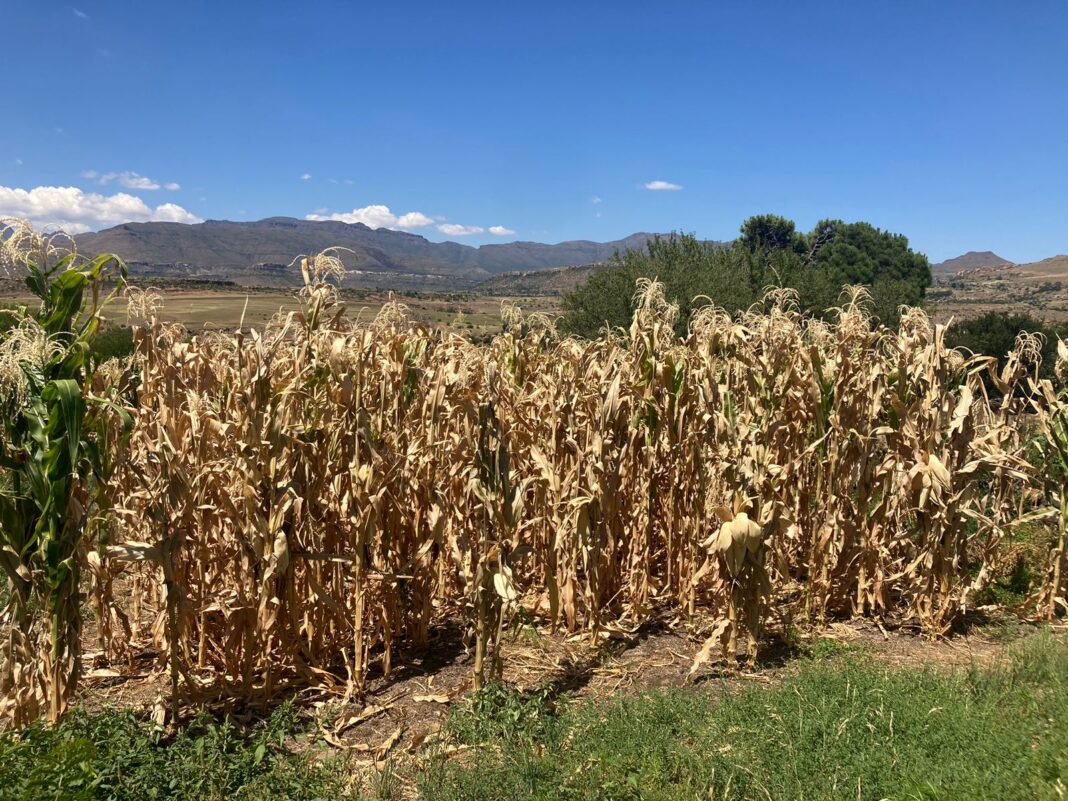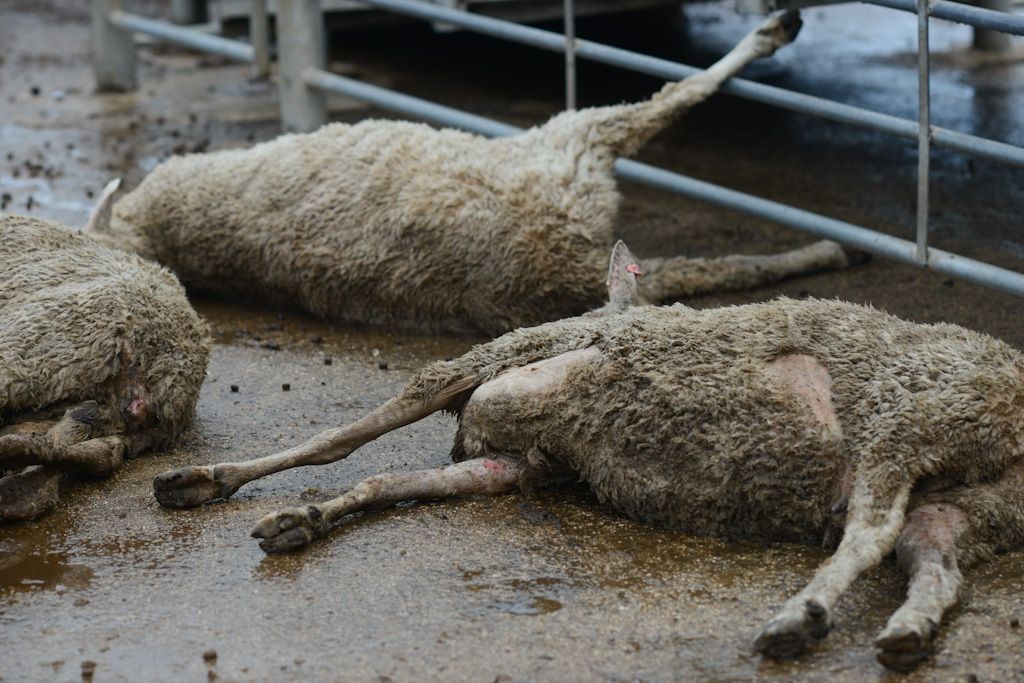Lerato Matheka
The Southern African region finds itself in the throes of a severe climate crisis due to the El Nino phenomenon with far-reaching implications for food security and agriculture.
The current episode of El Niño described as one of the strongest in history, is wreaking havoc on countries in the region, exacerbating existing vulnerabilities and threatening livelihoods.
According to reports from leading institutions such as the World Meteorological Organization (WMO), the impact of El Niño on Southern Africa is dire.
Extreme weather patterns, including drought, erratic rainfall, and soaring temperatures, have created a perfect storm of challenges for food production and security in the region.
WMO notes that in recent months, countries in the region have experienced unprecedented dry conditions, with rainfall deficits reaching alarming levels and this has led to widespread crop failure, water scarcity, and diminished yields, plunging millions of people into food insecurity.
The Regional Interagency Standing Committee (RIASCO), a senior-level forum focused on humanitarian assistance in Southern Africa, warns that the effects of El Niño will have severe consequences on livelihoods across the region.
The committee reveals that approximately 70% of the population in Southern Africa relies on agriculture for subsistence, making communities especially vulnerable to fluctuations in weather patterns.
“In Angola, Botswana, Eswatini, Lesotho, Namibia, Madagascar, Mozambique, Zambia, and Zimbabwe, an estimated 18 million people are currently experiencing crisis levels of food insecurity, according to the Integrated Food Security Phase Classification (IPC),” the committee points out, noting that Malawi is also grappling with significant food insecurity, with approximately 4.4 million people, or 22% of the population, facing food shortages.
The Committee notes that the impact of El Niño extends beyond food insecurity, with profound implications on public health, education, and economic stability.
“Children are particularly vulnerable, with millions at risk of malnutrition and disease due to limited access to nutritious food and healthcare services.”
“The Southern African region is facing a multifaceted crisis that requires urgent and coordinated action from governments, humanitarian organisations, and the international community,” the committee says, adding that efforts to mitigate the impact of El Niño and build resilience in vulnerable communities must be prioritised to prevent further suffering and hardship.
As institutions such as RIASCO, the WMO, and the UN Office for the Coordination of Humanitarian Affairs continue to monitor the situation, RIASCO stresses that stakeholders must work together to address the root causes of vulnerability and ensure the well-being of communities in Southern Africa.
“Only through collective action and sustained investment in resilience-building measures can the region weather the storm of El Niño and emerge stronger in its aftermath,” RIASCO says.
Reported Effects of El Nino on Southern Region
RIASCO indicates the effects of El Niño on Southern Africa are multifaceted and severe, impacting various aspects of life in the region.
Impact on Food Security
One of the most immediate and pressing consequences of El Niño in Southern Africa is its impact on food security. With agriculture being the backbone of many economies in the region, disruptions to farming activities can have devastating effects on food production and availability.
The prolonged drought conditions associated with El Niño have resulted in widespread crop failures, diminished yields, and dwindling food reserves. This has left millions of people without an adequate supply of food, pushing them into food insecurity and hunger.
In countries like Zimbabwe, Zambia, and Malawi, where agriculture plays a significant role in the economy and livelihoods of people, the impact of El Niño on food security has been particularly severe. The scarcity of water for irrigation, coupled with extreme temperatures, has decimated crops and livestock, leading to acute shortages of food and soaring prices in local markets.
Agricultural Challenges
El Niño has also presented numerous challenges for farmers in Southern Africa, making it increasingly difficult to sustain agricultural activities. The erratic rainfall patterns and prolonged dry spells have disrupted planting schedules and hindered crop growth, resulting in poor harvests and reduced incomes for farmers.
Moreover, the extreme weather conditions associated with El Niño have exacerbated pest infestations and disease outbreaks in crops and livestock, further exacerbating agricultural losses.
Farmers are struggling to cope with these challenges, as traditional farming practices prove inadequate in the face of such unpredictable weather patterns.
Water Scarcity
Water scarcity is another critical issue exacerbated by El Niño in Southern Africa. The prolonged dry spells and below-average rainfall have depleted water sources, leaving many communities without access to clean and safe drinking water. This has not only affected human consumption but also agricultural activities as farmers struggle to irrigate their crops and sustain livestock.
In rural areas, where access to water infrastructure is limited, communities are forced to travel long distances to fetch water, putting additional strain on the already vulnerable populations, especially women and children.
The lack of adequate water supply also increases the risk of waterborne diseases and sanitation-related health issues, further exacerbating the humanitarian crisis.
Health Impacts
The health impacts of El Niño in Southern Africa are far-reaching and multifaceted. The scarcity of food and clean water has led to malnutrition and increased susceptibility to infectious diseases among vulnerable populations, particularly children and pregnant women.
The prevalence of waterborne diseases such as cholera, dysentery, and typhoid has risen sharply in many parts of the region, as inadequate sanitation and hygiene conditions exacerbate the spread of infectious pathogens. Health facilities are overwhelmed with cases, further straining already fragile healthcare systems and resources.
Additionally, the extreme weather conditions associated with El Niño, such as heatwaves and floods, pose direct risks to public health and safety. Heat-related illnesses, vector-borne diseases, and injuries from natural disasters are on the rise, placing additional burdens on healthcare providers and emergency responders.
Socioeconomic Implications
The socioeconomic implications of El Niño in Southern Africa are profound, affecting livelihoods, economies, and social structures across the region. The agricultural sector, which employs a significant portion of the population, is particularly vulnerable to the impacts of El Niño, with many farmers facing financial ruin and debt due to crop failures and livestock losses.
The decline in agricultural productivity has ripple effects throughout the economy, leading to rising food prices, unemployment, and poverty. Smallholder farmers, who are already marginalised and vulnerable, bear the brunt of these economic hardships, exacerbating social inequalities and disparities.
Furthermore, the disruption of livelihoods and economic activities has forced many people to migrate in search of alternative sources of income and livelihood opportunities, leading to increased competition for resources and land. This has the potential to exacerbate social tensions and conflicts, further destabilising communities and exacerbating the humanitarian crisis.
Environmental Degradation
El Niño also has significant environmental consequences in Southern Africa, exacerbating environmental degradation and ecosystem disruptions. The prolonged drought conditions and deforestation associated with El Niño contribute to soil erosion, desertification, and loss of biodiversity, undermining the resilience of ecosystems and exacerbating the vulnerability of communities.
Furthermore, the increased frequency and intensity of wildfires during El Niño events pose significant risks to ecosystems and habitats, threatening biodiversity, air quality, and human health. The loss of natural vegetation and wildlife exacerbates the impacts of climate change, making ecosystems more susceptible to degradation and collapse.
Response and Adaptation Efforts
In response to the challenges posed by El Niño, governments, humanitarian organisations, and international agencies are working together to provide emergency assistance, support livelihoods, and build resilience in affected communities. Efforts are underway to distribute food aid, provide clean water and sanitation services, and deliver healthcare and nutritional support to vulnerable populations.
Also, initiatives are being implemented to promote sustainable agriculture practices, enhance water resource management, and strengthen disaster preparedness and response mechanisms. Community-based adaptation projects, such as climate-smart agriculture and water harvesting initiatives, are helping communities adapt to changing climate conditions and build resilience to future shocks.
Despite these efforts, significant gaps remain in funding, coordination, and capacity, hindering the effectiveness of response and adaptation measures. More resources and support are needed to scale up interventions, address underlying vulnerabilities, and build long-term resilience in Southern Africa.”
RISACO notes that the impacts of El Niño on Southern Africa are profound and far-reaching, affecting millions of people and exacerbating existing vulnerabilities and challenges.
“From food insecurity and water scarcity to health crises and environmental degradation, the consequences of El Niño are multifaceted and complex, requiring urgent and coordinated action from governments, humanitarian organisations, and the international community.”
The committee emphasises that only through collective action and sustained investment in resilience-building measures can Southern Africa weather the storm of El Niño and emerge stronger and more resilient in its aftermath.
Summary
- “The Southern African region is facing a multifaceted crisis that requires urgent and coordinated action from governments, humanitarian organisations, and the international community,” the committee says, adding that efforts to mitigate the impact of El Niño and build resilience in vulnerable communities must be prioritised to prevent further suffering and hardship.
- As institutions such as RIASCO, the WMO, and the UN Office for the Coordination of Humanitarian Affairs continue to monitor the situation, RIASCO stresses that stakeholders must work together to address the root causes of vulnerability and ensure the well-being of communities in Southern Africa.
- In countries like Zimbabwe, Zambia, and Malawi, where agriculture plays a significant role in the economy and livelihoods of people, the impact of El Niño on food security has been particularly severe.

Your Trusted Source for News and Insights in Lesotho!
At Newsday Media, we are passionate about delivering accurate, timely, and engaging news and multimedia content to our diverse audience. Founded with the vision of revolutionizing the media landscape in Lesotho, we have grown into a leading hybrid media company that blends traditional journalism with innovative digital platforms.






